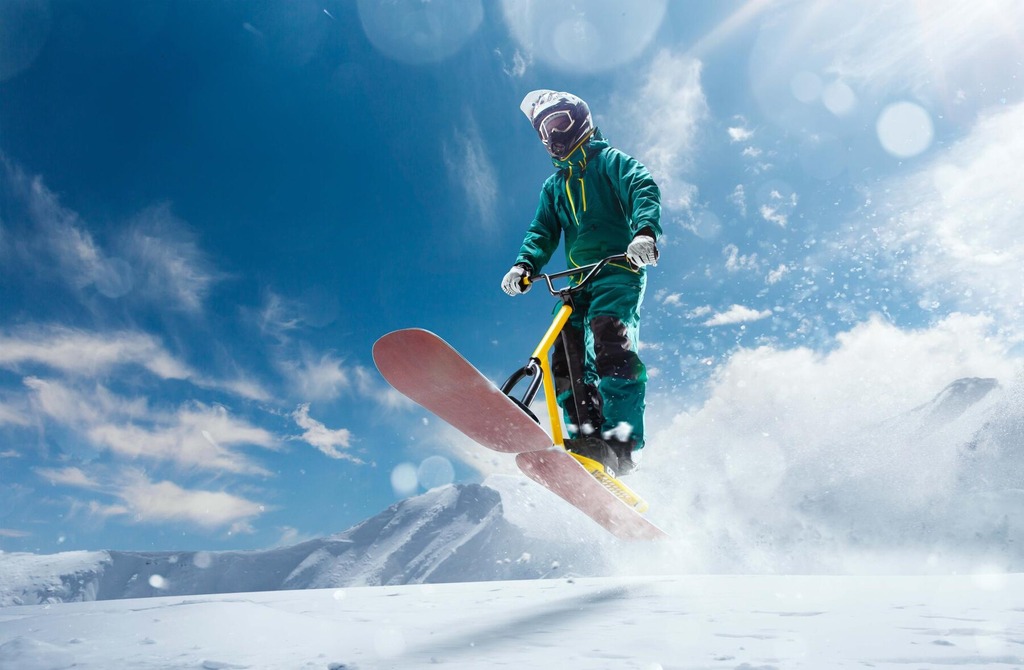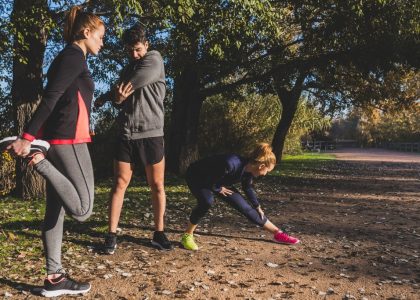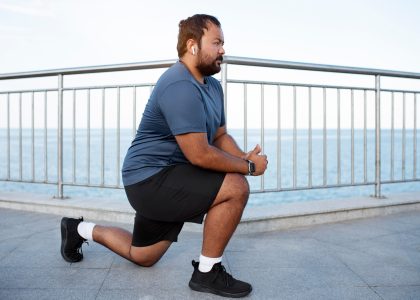Are you looking for exercises to improve your balance and stability on the board?
Curious about how to strengthen your legs for those deep powder days?
Interested in exercises that can help prevent common snowboarding injuries?
Want to know if there are any exercises you can do at home without fancy equipment?
If you’ve nodded yes in response to all the questions we asked, let us tell you that you’ll love the workouts moving forward.
So, without any blah blah, let’s talk about the best exercises for snowboarding that will help you carve up the slopes with confidence and style:
Snowboarding Exercises & Workouts
Here are the best snowboarding exercises for beginners:
1. Cable Wood Chops
Cable wood chops are excellent for snowboarding as they specifically target rotational strength and stability, which are crucial for generating power and control during turns and maneuvers on the slopes.
By engaging the core, obliques, and upper body muscles, cable wood chops help improve balance and coordination while enhancing the ability to twist and turn effectively, mimicking the movements required for carving through snow.
Execution:
- Start by setting up a cable machine with a handle attachment at shoulder height.
- Stand perpendicular to the machine with feet shoulder-width apart and knees slightly bent.
- Grasp the handle with both hands, keeping arms extended and core engaged.
- Rotate your torso away from the machine while pulling the handle diagonally across your body, finishing with your hands above your opposite shoulder.
- Control the movement back to the starting position.
2. Bosu Ball Squats
Bosu ball squats are among the beneficial workouts for snowboarders as they enhance lower body strength, stability, and proprioception.
Performing squats on a Bosu ball challenges the core and stabilizing muscles to maintain balance on an unstable surface, similar to the dynamic movements encountered while snowboarding.
By strengthening the legs and improving balance, Bosu ball squats can help snowboarders maintain proper stance and control on varied terrain, reducing the risk of falls and enhancing overall performance.
Execution:
- Place a Bosu ball (half stability ball with a flat platform) on the ground with the platform side up.
- Stand on the flat platform side with feet shoulder-width apart.
- Engage your core and keep your back straight as you lower into a squat position, bending your knees and pushing your hips back.
- Keep your weight centered and your knees tracking over your toes.
- Lower until your thighs are parallel to the ground or as far as you can comfortably go.
- Push through your heels to return to the starting position.
- Repeat for the desired number of repetitions.
3. Hollow Hold
The hollow hold exercise is advantageous for snowboarding as it targets core strength and stability, essential for maintaining proper posture and control while riding.
By strengthening the deep core muscles, including the transverse abdominis and rectus abdominis, the hollow hold helps improve balance and coordination, enabling snowboarders to maintain a strong and stable center of gravity, particularly during high-speed descents.
Execution:
- Lie on your back with arms extended overhead and legs straight out.
- Engage your core muscles by pressing your lower back into the ground.
- Lift your shoulder blades and legs off the ground simultaneously, keeping your lower back pressed into the floor.
- Keep your arms and legs off the ground, forming a “hollow” shape with your body.
- Hold this position for the desired duration while focusing on maintaining tension in your core.
- Lower back down to the starting position with control and repeat for the desired number of repetitions.
4. Box Jumps
Box jumps offer several benefits for snowboarding by enhancing explosive power, lower body strength, and dynamic stability.
By performing explosive jumps onto a box or platform, snowboarders can develop the leg muscles necessary for generating speed and pop when launching off jumps or navigating challenging terrain.
Additionally, box jumps improve proprioception and landing mechanics, helping to absorb impact and maintain balance upon landing.
Execution:
- Stand facing a sturdy box or platform with feet shoulder-width apart.
- Bend your knees and lower into a partial squat position.
- Explosively jump onto the box, swinging your arms for momentum.
- Land softly on the box with both feet, ensuring that your knees are slightly bent to absorb the impact.
- Stand up fully on the box before stepping back down to the starting position.
5. Stability Ball Leg Curls
Stability ball leg curls should be on your list of top snowboarding exercises as they target the hamstrings, glutes, and stabilizing muscles of the lower body.
By strengthening these muscles, stability ball leg curls help improve stability and control during turns and maneuvers on the snowboard.
Additionally, this exercise enhances hamstring flexibility and proprioception, which are essential for maintaining proper body alignment and preventing injuries while riding.
Execution:
- Lie on your back with your heels on top of a stability ball and arms by your sides for support.
- Lift your hips off the ground, forming a straight line from shoulders to heels.
- Engage your core and slowly roll the stability ball towards your glutes by bending your knees.
- Keep your hips lifted throughout the movement and avoid sagging.
- Extend your legs back out to the starting position with control.
6. Jumping Lunges
Jumping lunges are highly beneficial at-home workouts for snowboarding as they improve lower body strength, power, and agility.
By performing explosive lunges with a jumping motion, snowboarders can develop the leg muscles necessary for quick changes in direction and explosive movements on the slopes.
Jumping lunges also enhance balance and coordination, helping snowboarders adapt to variable terrain.
Execution:
- Start in a lunge position with your right foot forward and left foot back, both knees bent at 90-degree angles.
- Lower into a lunge, ensuring that your front knee does not extend past your toes.
- Explosively jump upward, switching the positions of your feet in mid-air.
- Land softly with your left foot forward and right foot back, immediately lowering into a lunge position.
- Continue alternating sides with each jump, maintaining a fluid and controlled motion.
- Repeat for the desired number of repetitions, focusing on balance and coordination.
7. Russian Twists
Russian twists are advantageous for snowboarding as they target the obliques, core muscles, and rotational strength necessary for generating torque and power during turns.
Moreover, Russian twists improve balance and stability, aiding in maintaining control and agility while riding in challenging conditions.
Execution:
- Sit on the ground with your knees bent and feet flat on the floor.
- Lean back slightly, keeping your back straight and core engaged.
- Hold a weight or medicine ball with both hands at chest height.
- Lift your feet off the ground, balancing on your glutes.
- Rotate your torso to the right, bringing the weight or ball beside your right hip.
- Pause briefly, then rotate to the left, bringing the weight or ball beside your left hip.
- Continue alternating sides in a controlled twisting motion, keeping your core engaged throughout.
Final Recap
By incorporating these snowboarding exercises into your workout routine, you’ll be ready to tackle any terrain and carve up the slopes with confidence.
So, what are you waiting for?
Get moving, and let’s shred.




